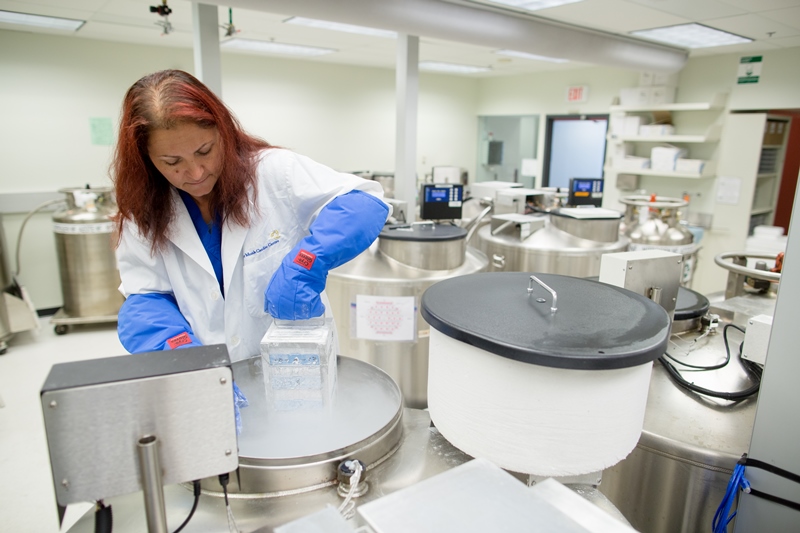There are over 163,000 outpatient visits to the Peter Munk Cardiac Centre (PMCC) each year, where cardiovascular diseases that range from arrhythmia to heart failure are treated. Over the last three years, a growing number of these patients have also become contributors to the centre’s biobank – an ambitious research infrastructure project that’s opening the way to a deeper understanding of cardiovascular disease and the treatments that work best for each patient.
“What we have at the PMCC is a unique opportunity to examine specimens from thousands of patients [in order] to look for biological markers and novel pathways of cardiovascular disease,” explains Dr. Phyllis Billia, a scientist and Co-director of the Peter Munk Cardiac Centre Cardiovascular Biobank. “The goal ultimately is to use this information to discover potential new treatments for the various types of cardiovascular disease.”
The recent acceleration of blood and tissue sample collection can be attributed to the efforts of the PMCC’s Ted Rogers Centre for Heart Research site, where biobanking is an essential pillar to many of the research activities. To build the biobank, the PMCC asks patients who go through procedures that require the collection or removal of biological specimen – such as blood tests or surgery – for permission to store their tissue or blood.
These samples are then linked to patients’ clinical data, including MRI and other imaging.
“This is one of the largest biobanks of its kind in Canada, representing a full gamut of cardiovascular diseases,” says Dr. Billia, who notes that all samples and data are scrubbed of any details that could identify their source.
The PMCC Biobank holds out the promise of more precise, personalized medicine. With its large – and still-growing – collection of samples and data, the biobank gives scientists access to research material with much greater depth and breadth than what they would find in their own laboratory biobanks.

Dr. Billia says the goal of the Biobank is to discover new treatments for various types of cardiovascular disease.
For patients, this translates into a future where therapies are fine-tuned to match each person’s genetic makeup. Dr. Billia, for instance, is leading a study that uses blood from patients with hypertrophic cardiomyopathy – an inherited heart condition – to create laboratory models of the disease that are then used to test a range of treatments.
Dr. Gollob says the PMCC Biobank will also allow researchers to genetically model the different types of cardiovascular disease in various ways. For example: by identifying a specific DNA alteration of a particular heart cell leading to disease, scientists may be able to intervene on the pathway of the disease.
Dr. Richard Weisel, a cardiovascular surgeon at the PMCC and Co-director of the Biobank, says the biobank has already had an impact in cardiac surgery. As an example, he cites cases involving patients with dilated aortas, which would normally be removed and replaced once the affected blood vessels have grown to a radius of at least five centimetres.
“But some surgeons wondered if that’s the right cut-off in deciding whether that blood vessel should be removed or not, mostly because we don’t understand the mechanisms in which the dilation occurs,” says Dr. Weisel, who is one of the scientists leading the PMCC Biobank. “So we took samples from the biobank and were able to look at patients who seem to have progression of the disease, versus those who did not.”
This large-scale comparison gave doctors a better understanding of the disease and revealed certain genetic abnormalities associated with dilated aortas – new knowledge that has since led to new therapies for the condition, he says.
“Our goal is to create a large consortium of cardiovascular researchers in the Greater Toronto Area who would have access to this incredible resource,” he says. “We also hope to expand our capabilities to the extent where we’ll have samples from all patients at the PMCC – something that’s done as routine in some places in the United States and Europe.”


